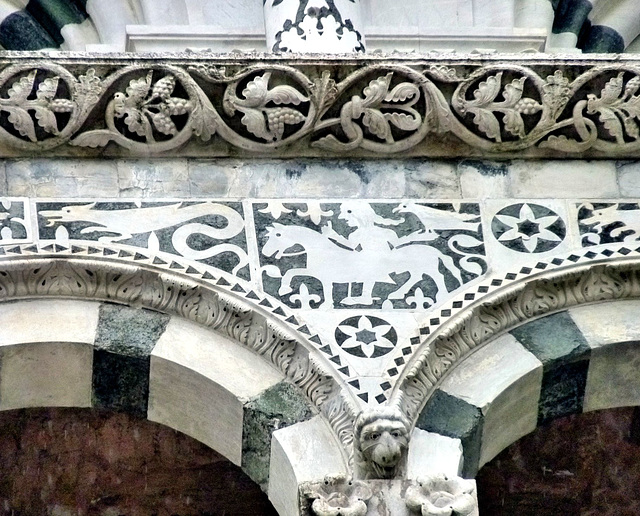Verona - Duomo di Verona
Saint-Restitut - Saint-Restitut
Saint-Restitut - Saint-Restitut
Saint-Restitut - Saint-Restitut
Saint-Restitut - Saint-Restitut
Saint-Restitut - Saint-Restitut
Saint-Paul-Trois-Châteaux - Cathédrale Notre-Dame
Saint-Paul-Trois-Châteaux - Cathédrale Notre-Dame
Saint-Paul-Trois-Châteaux - Cathédrale Notre-Dame
Biron - Saint-Eutrope / Notre-Dame
Marignac - Saint-Sulpice
Marignac - Saint-Sulpice
Marignac - Saint-Sulpice
Assisi - Cattedrale di San Rufino
Marcillac - Saint-Vincent
Hirsau - Abbey
Bergamo - Santa Maria Maggiore
Marcillac - Saint-Vincent
Gensac-la-Pallue - Saint-Martin
Gensac-la-Pallue - Saint-Martin
Lautenbach - Collégiale Saint Gangolph
Lautenbach - Collégiale Saint Gangolph
Lautenbach - Collégiale Saint Gangolph
Lautenbach - Collégiale Saint Gangolph
Lautenbach - Collégiale Saint Gangolph
Lautenbach - Collégiale Saint Gangolph
Lautenbach - Collégiale Saint Gangolph
Lautenbach - Collégiale Saint Gangolph
Lautenbach - Collégiale Saint Gangolph
Andlau - Saints-Pierre-et-Paul
Andlau - Saints-Pierre-et-Paul
Andlau - Saints-Pierre-et-Paul
Andlau - Saints-Pierre-et-Paul
Andlau - Saints-Pierre-et-Paul
Bad Reichenhall - St. Nikolaus
Bad Reichenhall - St. Nikolaus
Bad Reichenhall - St. Nikolaus
Bad Reichenhall - St. Nikolaus
Andernach - Maria Himmelfahrt
Andernach - Maria Himmelfahrt
Andernach - Maria Himmelfahrt
Rostock - Marienkirche
Messina - Duomo
Messina - Chiesa della Santissima Annunziata dei C…
Ciudad Rodrigo - Catedral de Santa María
Ciudad Rodrigo - Catedral de Santa María
Ciudad Rodrigo - Catedral de Santa María
Lucca - Duomo di Lucca
Poitiers - Notre-Dame la Grande
Poitiers - Notre-Dame la Grande
Poitiers - Notre-Dame la Grande
Saint-Benoît-sur-Loire - Abbey
Saint-Aulais-la-Chapelle - Saint-Jacques
Saint-Aulais-la-Chapelle - Saint-Jacques
Le Douhet - Saint-Martial
Carennac - Saint-Pierre
Agüero - Iglesia de Santiago
Agüero - Iglesia de Santiago
Marignac - Saint-Sulpice
Marignac - Saint-Sulpice
Marignac - Saint-Sulpice
Marignac - Saint-Sulpice
Marignac - Saint-Sulpice
Basel - Muenster
Andlau - Saints-Pierre-et-Paul
Andlau - Saints-Pierre-et-Paul
Lunas - Saint-Pancrace
Location
Lat, Lng:
Lat, Lng:
You can copy the above to your favourite mapping app.
Address: unknown
Lat, Lng:
You can copy the above to your favourite mapping app.
Address: unknown
See also...
Keywords
Authorizations, license
-
Visible by: Everyone -
All rights reserved
-
327 visits
Lucca - Duomo di Lucca


Lucca existed already in Etruscan times and became a Roman colony in 180 BC. The Diocese of Lucca dates back to the first century, legends tell, that St. Paulinus, a disciple of St. Peter, was the first Bishop of Lucca. In medieval times Lucca was the residence of the Margraves of Tuscany. After the death of Matilda of Tuscany (1115), Lucca constituted itself as an independent republic. Actually the "Republic of Lucca" existed from 1160 to 1805.
The Cathedral of Saint Martin is the seat of the Archbishop of Lucca. The construction of the cathedral started in 1063, when Anselm (later Pope Alexander II) was bishop here.
The western facade was begun in 1204 by Guido Bigarelli, who later sculpted (and signed!) the the octogonal baptismal font in the center of the Pisan Baptistery. He is one of the many gifted artists, that came from the area around the Lake Como and are known as "Comacine masters".
The facade consists of three arches. Above the portico are three open galleries adorned with sculptures and carvings. Here is a detail.
The marble frieze has many fantastic animals, dogs and this falconer. Falconry was a privilege of the high nobility. Frederick II, Holy Roman Emperor and head of the House of Hohenstaufen, wrote "De Arte Venandi cum Avibus" ("The Art of Hunting with Birds").
The Cathedral of Saint Martin is the seat of the Archbishop of Lucca. The construction of the cathedral started in 1063, when Anselm (later Pope Alexander II) was bishop here.
The western facade was begun in 1204 by Guido Bigarelli, who later sculpted (and signed!) the the octogonal baptismal font in the center of the Pisan Baptistery. He is one of the many gifted artists, that came from the area around the Lake Como and are known as "Comacine masters".
The facade consists of three arches. Above the portico are three open galleries adorned with sculptures and carvings. Here is a detail.
The marble frieze has many fantastic animals, dogs and this falconer. Falconry was a privilege of the high nobility. Frederick II, Holy Roman Emperor and head of the House of Hohenstaufen, wrote "De Arte Venandi cum Avibus" ("The Art of Hunting with Birds").
- Keyboard shortcuts:
Jump to top
RSS feed- Latest comments - Subscribe to the comment feeds of this photo
- ipernity © 2007-2024
- Help & Contact
|
Club news
|
About ipernity
|
History |
ipernity Club & Prices |
Guide of good conduct
Donate | Group guidelines | Privacy policy | Terms of use | Statutes | In memoria -
Facebook
Twitter

www.ipernity.com/group/332973
Sign-in to write a comment.